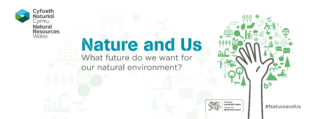
Natural Resources Wales (NRW) has been conducting a participatory futures exercise involving the people of Wales, exploring their relationship with nature to develop a shared vision for the future of the natural environment.
They have been utilising mixed-methods including scenarios, surveys, webinars, focus groups, art, and other approaches to develop their vision but have faced challenges building engagement and trust with communities. NRW also investigated how to merge these mixed-methods results into a shared vision.
We asked our cross-government network of futures practitioners for their advice and experiences, based on this we share some of the top tips below.
How to build engagement and trust with communities.
- Understand your audience by using community connectors – find key people in communities (community centres, sports clubs, schools, etc.) to truly understand the barriers to participation.
- Use the expertise of consultancies and organisations like the Royal Society of Arts that have experience in organising citizen assemblies and similar events. This can help to ease tensions around certain issues with participators.
- Develop trust through transparency – do not be condescending to your audience’s knowledge and understanding. Equally, be clear about what people are getting in return for repeat participation.
- Bring stakeholders into the project early - give them the opportunity to shape the vision.
Tools to bring together mixed-methods approaches to create a shared vision.
- Theory of change – used in policy development and evaluation to understand how the intervention(s) is expected to achieve the outcomes by synthesising existing evidence. It can be used to define and evidence public value.
- COM-B (capability, opportunity and motivation) model of behaviour – understand the changes needed for an effective behaviour change intervention.
- Most Significant Change (MSC) – participatory monitoring and evaluation involving the collection of significant change stories, with a further systematic selection of stories by searching for project impact.
- Build narratives and use storytelling – allows people to engage on a personal level, giving meaning and purpose to your work. Characters are useful tools as cognitive bridges.
- Thematic analysis – qualitative analysis to identify common themes from a set of evidence. It is useful for understanding people’s experiences, thoughts, or behaviours. It usually involves 6 stages: familiarisation of data, generating codes, exploring themes, reviewing themes, defining and naming themes, and writeup.
Do you have experiences of these issues or would like to hear more? We would love to hear from you! Please contact us at futures@go-science.gov.uk or NRW at holly.butterworth@naturalresourceswales.gov.uk, luke.maggs@naturalresourceswales.gov.uk.